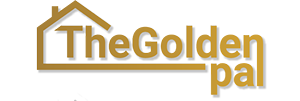Selecting high-quality suppliers is the cornerstone of a successful import business. Statistics show that 82% of international trade disputes stem from improper supplier selection. Whether cooperating directly with factories or through trading companies, the core lies in matching your business needs. This article objectively analyzes the screening logic for different types of suppliers to help you accurately identify reliable partners.
1. Multi-dimensional Screening Channels: A “Panoramic Network” Covering Factories and Trading Companies
- Industry Exhibitions: Facing All Participants in the Industrial Chain
- Factory Resources: Shenzhen International Electronics Exhibition (ELEXCON) has a “Factory Direct Supply Zone” where you can inspect SMT production lines on site; the “Manufacturing Factory Hall” at Shanghai International Furniture Fair (CIFF) is suitable for finding OEM/ODM source manufacturers.
- Value of Trading Companies: The “Comprehensive Trade Zone” at the Canton Fair gathers high-quality traders, especially suitable for merchants purchasing complex product categories (such as needing electronic accessories and textiles simultaneously), who can integrate multi-category supply chains through one trading company.
- B2B Platforms: Precisely Screening Different Types of Suppliers
- Factory Identification: Filter the “Manufacturing Enterprise” label on Alibaba International Station, check “factory live” videos and ISO certifications; suppliers marked “Manufacturer” on Made-in-China can directly communicate capacity details.
- Trading Company Screening: Prioritize “Gold Suppliers” under the “Trading Enterprise” label, check their “number of cooperative factories” and “served countries/regions” (e.g., traders focusing on European and American markets are more familiar with local regulations).
- Industry Ecosystem Recommendations: Targeted Resource Acquisition
- Factory recommendations: Obtain member factory lists through industry associations (such as China Electronic Components Industry Association), these enterprises usually pass capacity audits.
- Trading company recommendations: Consult multinational purchasing groups (such as Li & Fung) about their cooperative regional traders, who often have mature quality control and logistics systems.
2. Core Evaluation Indicators: Differentiated Standards for Factories and Trading Companies
Evaluation Points for Manufacturing Suppliers (Factories)
| Evaluation Dimension | Key Observation Points |
|---|---|
| Equipment and Capacity | Number of fully automatic chip mounters (e.g., Yamaha YSM series) in electronics factories; proportion of CNC equipment in furniture factories; confirmation of 10%-15% flexible capacity reserved during peak seasons |
| Quality Control System | Whether equipped with laboratories (such as salt spray testing equipment, color fastness testers); provision of factory inspection reports in the past 3 months (including AQL sampling data) |
| Export Experience | Check export customs records in the past year (e.g., proportion of CE-certified products exported to the EU); whether there is a professional foreign trade team to handle orders |
Evaluation Points for Trading Suppliers (Trading Companies)
| Evaluation Dimension | Key Observation Points |
|---|---|
| Supply Chain Integration Ability | Number of cooperative factories (≥2 high-quality factories in the same category recommended); ability to provide factory qualification audit reports (such as ISO, BSCI certifications) |
| Service Professionalism | Whether to provide advance payment guarantees (to reduce deposit risks), past cases of handling quality disputes (e.g., complaint response time ≤24 hours) |
| Risk Bearing Capacity | Whether to provide advance payment guarantees (to reduce deposit risks); past cases of handling quality disputes (e.g., complaint response time ≤24 hours) |
3. Negotiation Skills: Strategies for Different Types of Suppliers
- Negotiating with Factories: Focus on Capacity and Cost
- Core demands: “What is your minimum order quantity (MOQ)? If the annual purchase volume reaches 100,000 pieces, can you share the mold cost (to split tooling fees)?”
- Risk mitigation: Require in the contract that “changes in subcontractors must be notified in writing 15 days in advance with new factory sample confirmation.”
- Negotiating with Trading Companies: Clarify Service Boundaries and Responsibilities
- Core demands: “Does the quotation include destination port customs clearance fees? What responsibilities will your company bear if customs clearance is delayed due to non-compliant product certifications?”
- Efficiency guarantee: Agree on service clauses such as “sample delivery time ≤3 days” and “weekly order progress reports,” which are written into the contract as assessment criteria.
4. Risk Warnings: Rationally Avoiding Potential Problems of Various Suppliers
| Supplier Type and Characteristics | Risk Level | Risk Logic Analysis | Typical Scenarios |
|---|---|---|---|
| Factories: Pure Domestic Sales Factories Without Export Qualifications | ★★★★☆ | Lack of foreign trade experience, may face customs clearance obstacles due to missing certifications (e.g., no CE); unfamiliar with L/C operation processes | First order detained in Rotterdam port for 14 days due to failure to provide EU-compliant material reports |
| Trading Companies: Without Fixed Cooperative Factories | ★★★★☆ | Rely on temporary factories for OEM, leading to unstable quality; may choose unqualified small factories to reduce costs | Discrepancy between samples and bulk goods (imported fabrics for samples, domestic substitutes for bulk goods), complaint rate over 20% |
| Factories/Trading Companies: Quotes Significantly Below Market Average | ★★★★☆ | More than 20% lower than industry costs, likely to cut corners (e.g., used chips for electronic components, inferior boards for furniture) | USB-C interface quoted 40% lower than industry, with actual product short-circuit rate over 30% |
| Factories/Trading Companies: Refusing to Provide Traceability Documents | ★★★☆☆ | Unable to prove raw material sources, may involve infringement (e.g., counterfeit designs) or prohibited materials (e.g., containing azo dyes) | Claimed “leather from Italy” but without import customs declarations, actual products were chromium-exceeding leather from domestic small factories, destroyed by EU authorities |
| Supplier Type and Characteristics | Risk Level | Risk Logic Analysis | Typical Scenarios |
|---|---|---|---|
| Factories: Pure Domestic Sales Factories Without Export Qualifications | ★★★★☆ | Lack of foreign trade experience, may face customs clearance obstacles due to missing certifications (e.g., no CE); unfamiliar with L/C operation processes | First order detained in Rotterdam port for 14 days due to failure to provide EU-compliant material reports |
| Trading Companies: Without Fixed Cooperative Factories | ★★★★☆ | Rely on temporary factories for OEM, leading to unstable quality; may choose unqualified small factories to reduce costs | Discrepancy between samples and bulk goods (imported fabrics for samples, domestic substitutes for bulk goods), complaint rate over 20% |
| Factories/Trading Companies: Quotes Significantly Below Market Average | ★★★★☆ | More than 20% lower than industry costs, likely to cut corners (e.g., used chips for electronic components, inferior boards for furniture) | USB-C interface quoted 40% lower than industry, with actual product short-circuit rate over 30% |
| Factories/Trading Companies: Refusing to Provide Traceability Documents | ★★★☆☆ | Unable to prove raw material sources, may involve infringement (e.g., counterfeit designs) or prohibited materials (e.g., containing azo dyes) | Claimed “leather from Italy” but without import customs declarations, actual products were chromium-exceeding leather from domestic small factories, destroyed by EU authorities |
5. Unique Value of High-Quality Trading Companies (Supplementary Note)
- Scenarios Suitable for Choosing Trading Companies:
- Complex procurement categories (e.g., needing electronic accessories, packaging materials, and textiles simultaneously), which can simplify management through one trading company.
- First entry into the Chinese market, trading companies can provide policy consulting (e.g., import country tariff preferences, certification requirements);
- Small-batch trial orders (trading companies can integrate small orders from multiple factories, lowering MOQ thresholds).
- Core Advantages of High-Quality Trading Companies:
- Have mature quality control teams that can replace buyers in factory inspections (especially suitable for cross-border purchasers who cannot frequently visit China);
- Familiar with international logistics rules, able to optimize transportation plans (e.g., LCL cargo loading planning, reducing logistics costs by 20%).
Next Preview: How to control product quality from the source? We’ll analyze China’s quality standard system, third-party inspection processes, and contract clause design – stay tuned!

